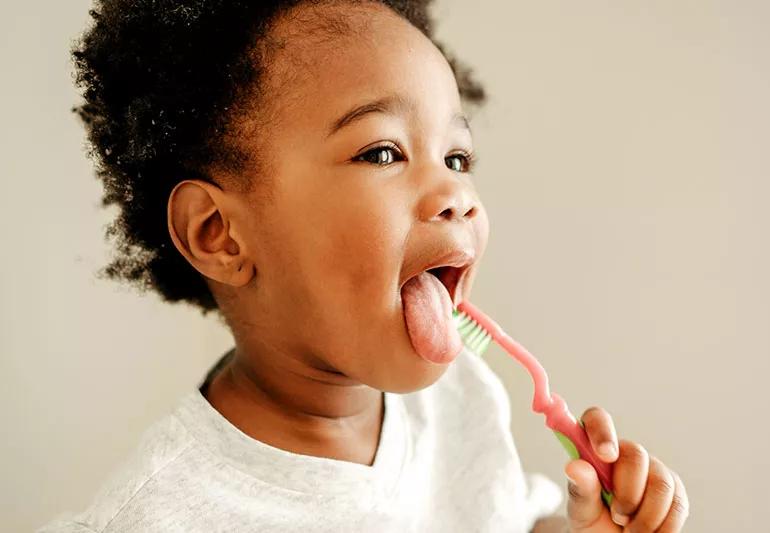Start using fluoride with baby's first teeth

What’s the most common chronic disease in children? Tooth decay.
Advertisement
Cleveland Clinic is a non-profit academic medical center. Advertising on our site helps support our mission. We do not endorse non-Cleveland Clinic products or services. Policy
This infectious disease is caused by bacteria in your child’s mouth. As the bacteria metabolize carbohydrates they produce acid that over time, destroys tooth enamel and causes cavities.
But according to pediatrician Isabelita Guadiz, MD, the good news is that you as a parent can help prevent this problem early on and throughout every age of childhood.
There are steps you can take as early as the infant stage to begin protecting your child from tooth decay.
Tooth decay is dependent on what goes into their mouth and how long it stays there. That’s why the best rule of thumb for newborns and infants is — don’t put your baby to bed with a bottle of milk or juice. Bacteria and sugars from both can rest too long in baby’s mouth through nap time or overnight which increases opportunity for decay.
Researchers at the American Academy of Pediatrics (AAP) say using fluoride toothpaste as early as when teeth are first appearing is key to stopping cavities from forming. Fluoride is a mineral that occurs naturally in many foods and water and helps prevent decay by making teeth more resistant to acid attacks on tooth enamel.
They advise parents to use an extra-soft bristled brush with a tiny amount of fluoride toothpaste for babies as soon as those first two teeth pop in on the bottom.
Advertisement
Twice per day (especially before bedtime) parents should apply a dab of toothpaste the size of a grain of rice right onto the teeth, and brush gently if possible.
At any age, parents are advised to help their kids brush their teeth for two minutes, twice a day. It’s a good habit that can be challenging for parents to help their children develop, but well-worth the effort down the road. Your child should also floss at least once per day.
Here’s a recap of expert tooth care advice for children of all ages.
Following these recommendations is critical because early childhood tooth decay is the single greatest risk factor for cavities in your child’s permanent teeth.
Researchers found that as many as 59 percent of 12- to 19-year-olds have at least one documented cavity. But fluoride toothpaste reduces tooth decay in children by 15 to 30%, according to the Centers for Disease Control.
There are some risks of fluoride use, like fluorosis which can cause tooth discoloration. The majority of cases in the U.S. are mild and involve white streaks and opaque areas on the teeth. But the risk for developing fluorosis mostly passes by age 8.
“Help your children take care of their teeth early, and as they get older try to reinforce the importance of brushing after meals,“ Dr. Guadiz says. “These good habits will stay with them their throughout their lifetime — and be sure to visit their pediatrician and dentist each year.”
Advertisement
Learn more about our editorial process.
Advertisement

Despite unfounded theories, fluoride has the power to make your teeth stronger

Most recommended precautions center around minimizing bruising or swelling

Even one drink can have an impact on your cognitive function leading to slurred speech, blurred vision and impaired memory

Understand who may (and may not) benefit

Lorem ipsum dolor sit amet. Et odio Quis vel ipsam omnis eum alias deleniti et placeat impedit non voluptas galisum hic autem enim et cupiditate aliquid. Est beatae quidem non facilis autem ut commodi nisi aut tempore rerum et dolores voluptatem cum enim optio id sapiente quasi. Ad laboriosam officiis 33 cupiditate sequi ea voluptatum consectetur qui necessitatibus voluptate et quasi doloremque et facere explicabo quo explicabo officia

Seeking help through therapy can be an important step in improving your quality of life when you have UC

Type 2 diabetes isn’t inevitable with these dietary changes

Applying a hot or cold compress can help with pain